American Traditional tattoos, also known as Old School, are rooted in a rich history that dates back to sailors and early artists who popularized this style. With their bold lines, vibrant colors, and iconic imagery, these tattoos are incredibly popular even today. They embody a rebellious spirit while telling a story of resilience, adventure, and individuality. Whether it’s a classic anchor, rose, or eagle, each piece leaves enduring marks on the skin, carrying a legacy of timeless art.
As an aspiring artist, I’ve tried drawing these designs myself and found their straightforward, 2-D nature surprisingly easy to work with. The rules and norms of Old School styles are simple—limited designs, strong outlines, and a striking color palette. If you’re deciding on tattoo ideas, understanding these themes can help narrow down choices. Honorable Society tattooists, for instance, keep the tradition alive by sticking to these long-established techniques.
For those looking to break into this art form, a deep appreciation for traditional tattooing is key. Whether you want to paint like a pro or just admire the art, knowing the designing principles behind American Traditional tattoos is essential. If you’re serious, schedule a consultation with experienced ink masters—they’ll guide you through the process while staying true to the enduring essence of this iconic style.
The History of American Traditional Tattoos
The American Traditional tattoo style, often called Old School, took its form when sailors in the 19th-century brought back ancient tattooing techniques from the Pacific. These early designs evolved in America, mixing maritime symbolism with bold lines and vibrant colors—think anchors, swallows, and pin-up girls. By the 1930s, Norman “Sailor Jerry” Collins, a prominent name in the tattoo world, began refining these motifs, earning his title as the father of the style. His work wasn’t just art; it was a testament to freedom and rebellion, using iconic imagery that still resembles classic drawings today.
I’ve always admired how these tattoos survived cultural shifts—from the 1800s to the 1970s and 80s, when societal perceptions softened, letting the style flourish. What makes them enduring? Their simple, 2-D aesthetic with thick black lines and traditional colors (red, yellow, green) ensures they age beautifully. As an artist, I’ve perfected my own drawing of these designs, and their timeless appeal lies in their straightforward rules: patriotic symbols, bold outlines, and a limited palette.
Today, American Traditional remains a popular choice among enthusiasts, not just for its history but for what it represents—individuality, adventure, and a nod to the past. Whether you’re a soldier, artist, or collector, understanding this background is important. The style’s imagery—from eagles to roses—portrays stories without needing anything complex. That’s the magic of Old School: it’s timeless, iconic, and forever etched in ink.
-
Why Old School Tattoos are Still Important for New Artists
Every apprentice should learn old school tattoo techniques because this style teaches the easiest way to master drawing fundamentals while following clear rules – from bold designs like roses, anchors, and daggers to animals and skulls, these 2-D elements form the backbone of any portfolio. As someone who’s mentored apprentices, I’ve seen how studying American traditional tattoos builds essential skills fastest; their simplicity helps artists draw confidently for clients while developing a versatile style. Even if it’s not your favorite, the experience of working within these classic parameters gives artists an edge – that’s why I always recommend mastering them early in your apprenticeship.
-
The Difference Between American Traditional Tattoos and Neo Traditional Tattoos
While neo traditional tattoos were born from American traditional roots, the style differences become clear when you know what to look for – traditional tattoos stick to a limited palette of bold red, yellow, and green, while neo traditional designs use colors outside this range and play with different weights in their lines to create more depth. As an artist who’s worked in both styles, I’ve noticed clients often see the blurry line between these two approaches until I point out how looking closely at the tattoo’s technique and color choices makes the distinction clear.
Common American Traditional Tattoo Designs
For those looking to make a bold statement with timeless appeal, American Traditional tattoos offer a rich collection of distinct motifs – from vibrant nautical scenes featuring anchors and ships to fierce predators like panthers and eagles, each design narrating its unique tale. Having worked in this style for years, I’ve seen how these captivating designs form a visual treasure trove, where classic themes like roses, daggers, and pin-up girls remain crowd favorites that never go wrong. Let’s shine a spotlight on what makes this world of ink so special – that perfect dash of nostalgia coupled with unshakable attitude.
Skulls
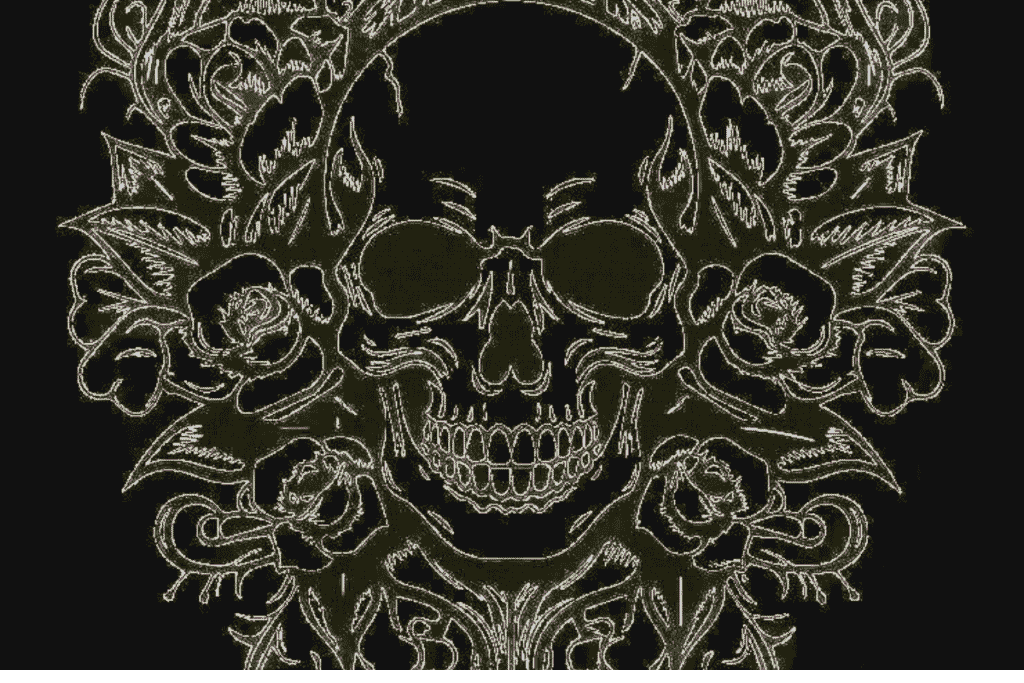
Contrary to what many think, skulls in tattoos symbolize something little less morbid than an interest in the dead – they’re a powerful reminder of life’s fleeting nature. In my years of tattooing, I’ve found clients choose skull designs to represent their commitment to living fully, embracing that “you only live once” attitude while having the courage to conquer their biggest fears about death. These stark images serve as both a homage to our ephemeral existence and a celebration of the present moment.
Furthermore, skull tattoos are frequently seen as honoring the circle of life – for every ending comes something new. The concept goes beyond mortality; it’s about rebirth and the infinite cycle that connects us all. When tattooed, a skull isn’t just associated with darkness – it highlights our ability to face life’s design head-on, making it one of the most profound yet paradoxically life-affirming symbols in American Traditional art.
Daggers
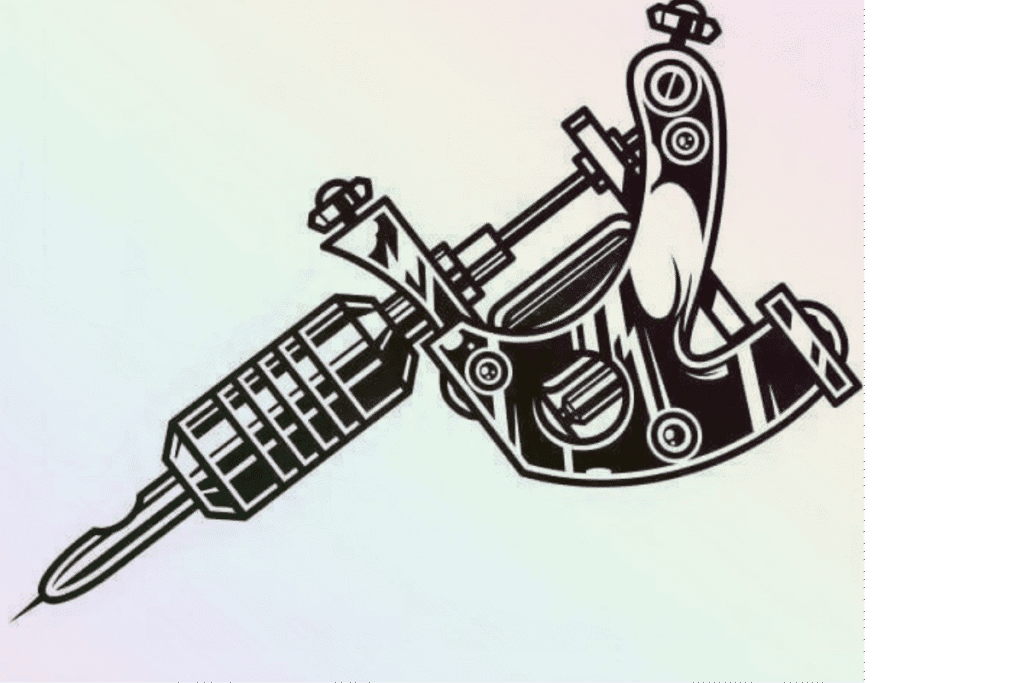
In Traditional tattooing, a dagger’s meaning often comes down to the wearer’s personal experiences – this piece can symbolize both negative feelings like betrayal and loss, or positive qualities like bravery and the need for protection. What fascinates me most is how the same design can represent such opposing emotions depending on its imagery and placement; when placed with a rose, for example, it represents the juxtaposition of beauty and pain, love and hate that we all encounter in life.
Much like other traditional designs, the dagger’s symbolism depends on what’s put with it – I’ve seen clients use this imagery to determine their own narrative about overcoming bad with good. The dagger has become a popular choice for those who wish to immortalize their scars, Symbolizing both courage and resilience through ink.
What makes the dagger truly special is its ability to capture life’s dualities – it’s one of the many traditional motifs that represents not just a single idea, but the full spectrum of human characteristics and experiences. Whether standing alone or combined with other elements, this design continues to hold deep meaning for those who choose to wear it.
Pin-Up Girls
Those sassy pin-up beauties you see in classic tattoos aren’t just pretty faces – they’re a nostalgic nod to the vintage era, perfectly encapsulating the bold beauty, femininity, and irresistible allure that define this iconic style.
Serpents
In classic American Traditional tattoos, these slithering creatures are masterfully depicted as more than just snakes – they’re a profound symbol of transformation and rebirth, representing life’s constant cycles of change.
The Meaning Behind Popular American Traditional Tattoo Symbols
American Traditional tattoos use symbols to express more than meets the eye – each motif carries deep meaning, incorporating tales of history, from sailors’ bravery to timeless love. Having studied these designs for years, I’ve found that what makes them remain popular and good after so long is how they stick to their roots while evolving naturally over time. The pioneer artists who developed this style understood that a tattoo is intended to last forever, which is why they used symbolism as the basis of their work – getting one means honoring both the art form and its strong symbolic value.
From anchors representing stability to swallows symbolizing homecoming, these common themes continue to resonate because they’re more than just art – they’re visual stories with meaning. Whether you’re getting your first piece or adding to a collection, taking time to read an in-depth guide about traditional tattoo meanings helps you explore the rich history behind each design. After all, when you choose this style, you’re not just wearing art – you’re carrying a piece of cultural history that’s stood the test of time.
Patriotic Symbols
Patriotic symbols became a key component of American Traditional tattoos when Soldiers during World War II started etching eagles, flags, and military insignia onto their skin, turning their bodies into living canvas that proudly displayed their love for homeland – these iconic designs maintain strong ties to our military heritage while standing as timeless testaments to national pride.
-
Eagle
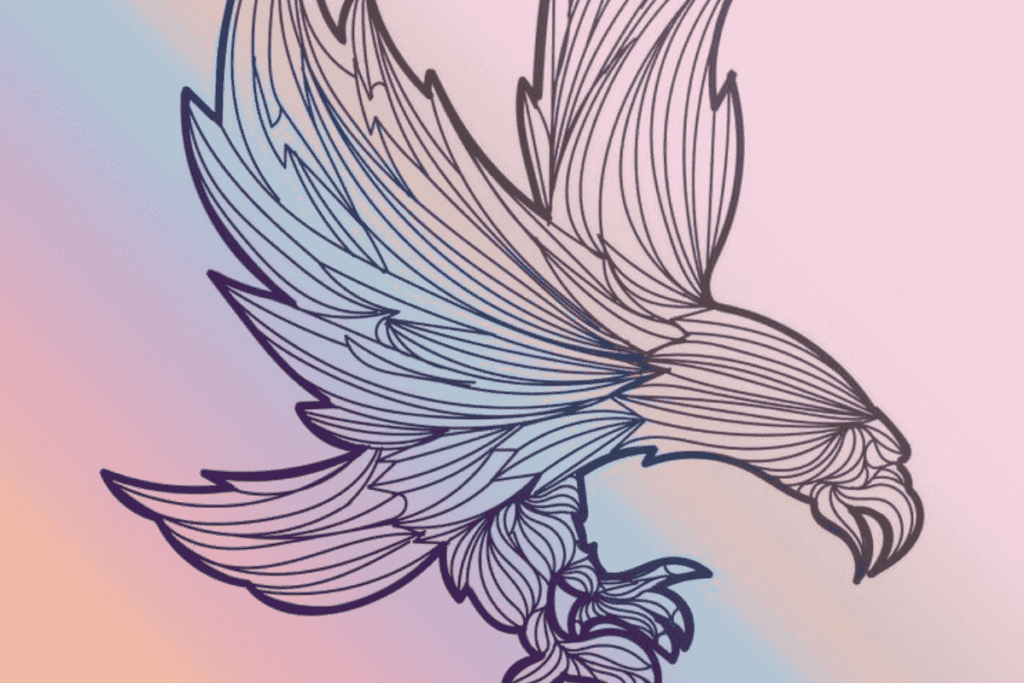
The mighty eagle stands as a staple in American Traditional tattoo art, serving as both a national emblem of the United States and a powerful symbol of freedom, courage, and independence. What makes this design so key is how it represents different values – originally seen as a sign of patriotism for those who served their country, it’s now a classic choice for anyone seeking to represent their personal strength and resolve. In my years of tattooing, I’ve noticed clients often choose eagle designs to achieve a visual representation of their ambitions, believing that like the king of the skies, they can put their mind to whatever goals they pursue.
Furthermore, the eagle’s characteristics – its keen vision, intelligent attacks from above, and dominant presence – make it ideal for those wearing this tattoo to showcase their own leadership qualities. The design holds underlying meaning in Native American culture too, where Eagles are viewed as spiritual messengers between worlds. This imagery has popped up throughout history in different forms, from military insignias to art pieces, proving its timeless appeal.
What continues to fascinate me is how this symbol adapts across contexts while keeping its core meaning – whether representing the land of the free, personal triumphs, or nature’s raw power. The eagle tattoo remains reflective of America’s spirit, always evolving yet always maintaining its classic status in the Traditional tattoo art form.
-
Flag
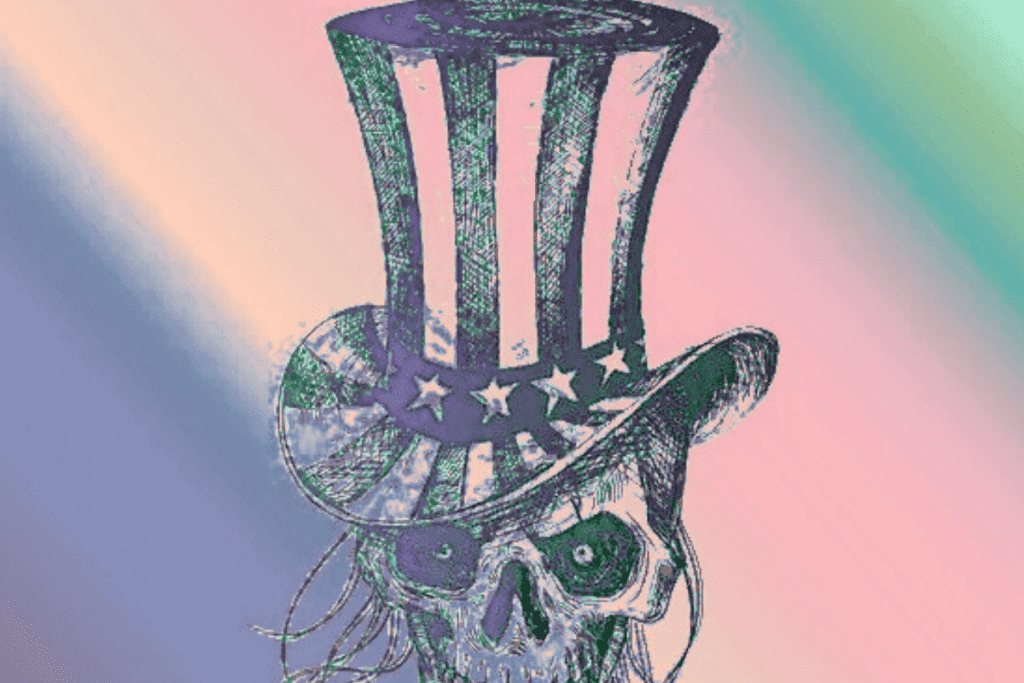
The vibrant red, white, and blue of the American flag makes it a patriotic staple in traditional tattoo style, where it stands as a bold testament of love and loyalty to the nation.
Nautical Themes
The nautical motif remains one of the most prevalent themes in American Traditional tattoos, with designs featuring majestic ships and swashbuckling sailors that pay homage to our rich seafaring heritage. These iconic images became popular among sailors as a way of symbolizing their journeys and life at sea, transforming their bodies into living maps of adventure. What makes these tattoos so special is how they capture both the romance and reality of maritime life – every anchor, compass, and schooner tells a story of survival and wanderlust that continues to resonate today.
-
Swallow
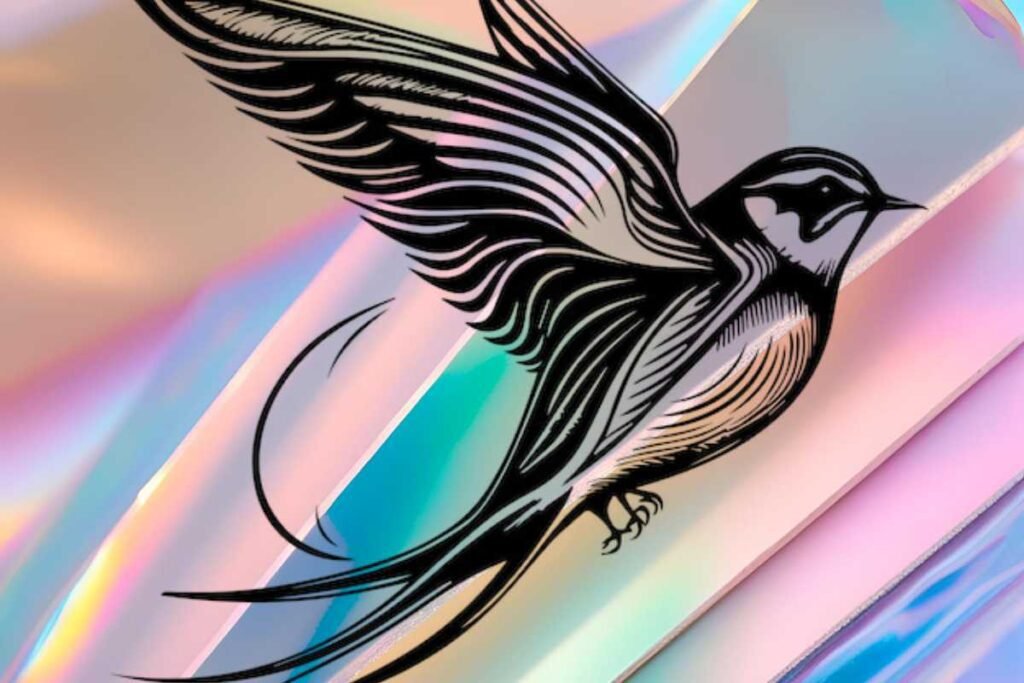
Swallows, those beautiful birds that can travel over 5,000 nautical miles yet always return to their same nesting site, became the perfect symbol for sailors facing the extreme conditions of the sea. I’ve inked countless swallow designs, and each tells a story – Often seen in pairs, sailors would get one to represent setting sail, and the other upon return home, creating a representation of their journey and success. These small birds, unlike others, consistently brave long distances, much like the sailors who wore them as badges of honor.
Furthermore, having more swallow tattoos wasn’t just about decoration – each acquired design was a reflection of one’s nautical caliber, showing the travelled distances and sailing expertise. There’s even an old myth that if a sailor were to drown, the swallow would lift their soul to heaven. This deep symbolism makes the swallow Not only a beautiful choice but one steeped in maritime history and personal achievement.
-
Anchor

An anchor tattoo signifies stability—a strong foundation both for a mariner battling the high seas and for anyone who values these traits. Its meaning is one of the most literal in Traditional tattooing: it’s designed to prevent a ship from drifting away, mirroring how people get tattooed to represent staying grounded. For many, it’s about one’s personality—being the someone who remains steady no matter what life throws at them.
You’ll often see anchors paired with banners reading a name or shown alongside other traditional motifs like roses or daggers to create a contrast between strength and softness. I’ve inked countless small American traditional tattoo designs where the anchor’s simplicity speaks volumes—whether it’s about a loved one or a scene that represents what the person wants to embody. It’s not just ink; it’s a reminder of what (or who) keeps you steady.
Ship
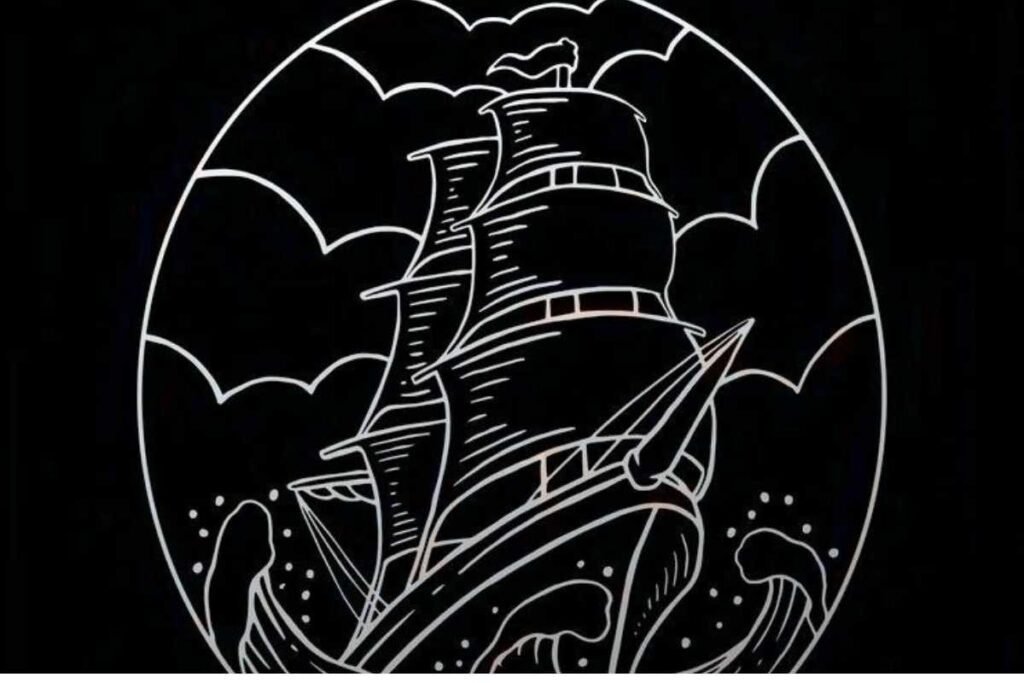
In American traditional tattooing, the ship is more than just Maritime imagery—it’s a symbol of a sailor’s life, carrying deep meaning. For those who wear it, this vessel represents freedom, breaking restrictions as it sails into the unknown. The turbulent waves around it? They speak of a challenging journey, but also exploration and discoveries, embodying the adventure that defines a sailor’s nature. Yet, there’s warmth too—the homely feel of a home at sea, a connection to homeland even while chasing the wanderlust of travel. Every time I’ve inked this classic design, the wearer’s identity shines through: a mix of love for the open ocean and the longing to return, making it one of the most timeless tattoo’s in the theme.
Love and Loss
In American Traditional tattooing, few designs carry as much significant emotional weight as the classic hearts and roses – they’re the visual language of love, romance, and remembrance. That bold Mom tattoo you’ve seen on countless sailors? It’s not just ink; it’s a style perfected over generations to reflect deep emotions in the simplest, most powerful way. Having worked in shops for years, I’ve seen how these designs become more than art – they’re personal monuments, their bright colors and bold lines keeping memories alive long after the pain fades.
-
Heart
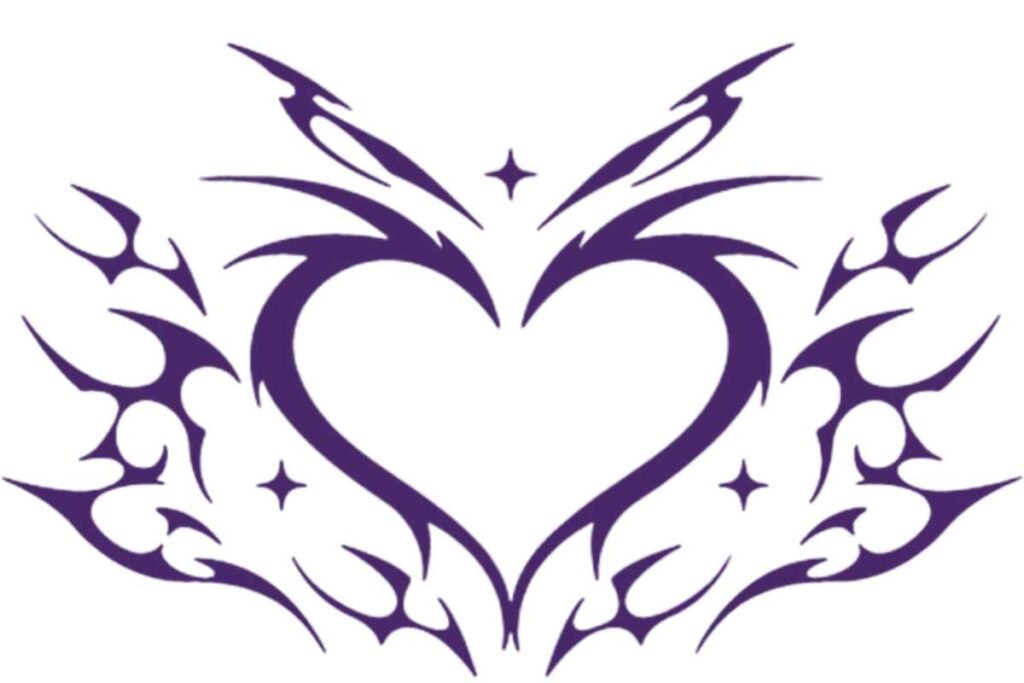
In American Traditional tattooing, the heart stands as one of the most versatile symbols, carrying layers of emotion from love and passion to sorrow and heartbreak. That classic design with a banner and name isn’t just decoration—it’s a way to keep loved ones close, a tradition that originated with sailors facing the risk of long voyages. I’ve inked countless variations, from simple hearts to dagger-pierced ones, and each tells a story. The crying heart, for instance, isn’t just about pain; it’s a reflection of making it through tough times and coming out stronger.
What fascinates me most is how this imagery evolved—from the traditional valentine shape to more anatomical versions—yet never lost its representative power. Whether it’s a striking image of broken love or a tribute to someone cared for, these tattoos literally let you wear your heart on your sleeve. The bold colors and clean lines of this style aren’t just about aesthetics; they’re about signifying what matters most, even in the realm of tough sailor culture.
-
Rose
In American Traditional tattooing, roses perfectly epitomize life’s contrasts—their velvety beauty always guarded by sharp thorns. This balance between attraction and pain makes them powerful symbols that can represent both love and sorrow. Having inked hundreds of these beautiful yet thorny designs, I’ve seen how they bloom with meaning—whether honoring a mum, wife, or lover left behind by sailors at sea. The feminine connotation traces back to Greek mythology, where roses were symbolic of Aphrodite, which explains why this image has always represented romantic ideas.
What’s most surprising is how versatile rose tattoos are—they pair effortlessly with other subject matter, creating either natural combinations (like with a butterfly) or intentional juxtaposing contrasts. The bold colors of traditional style amplify this concept, making the rose not just decoration, but a complement to deeper personal matter. Whether standing alone or amidst other elements, each rose tells a story about life’s beautiful struggles.
-
‘Mom’
That bold classic “Mom” tattoo you’ve seen on countless forearms isn’t just ink – it’s a heartfelt tribute that honors every tattooed person’s enduring love for their mother, remaining as timeless and universal as the bond it represents.
American Traditional Sleeve “Filler”
A traditional sleeve isn’t just one large design – it’s a collection of individual, styled pieces that cover a whole limb, creating what we call a patchwork effect. This concept is similar to quilting, where several small pieces make up a larger piece of art. Unlike Japanese sleeves that require a unified background, American traditional tattoos work with defined shapes and edges, often leaving intentional gaps of negative space that become part of the design.
From my experience, most customers come with a bunch of smaller tattoos they want combined into a full sleeve. Luckily, there are clever ways to fill these blank areas while maintaining the style – using filler elements like Speckled Stars, All-Black patterns, or Floral motifs. These small, hand-sized elements create cohesion without overpowering the main pieces, keeping that classic patchwork look that originates from sailor tattoo practice.
The point of difference with traditional sleeves is their flexibility – they’re not restrictive to a single artist or design. Whether you’re working with multiple designs of different sizing or planning a sleeve in advance, the key is balancing the space so the skin becomes part of the art. It’s this type of strategic planning that makes American tattoos stand apart from other styles, where each body becomes a unique canvas telling its own story through carefully placed elements.
How to Paint Traditional Style Designs
Once you’re happy with your crisp line work, put in the shading first before you add vibrant color, using premium tools like Doc Martins watercolors or Coptic markers for authentic results.
-
Know Where to Put Shading
Though traditional tattoos are meant to look flat and 2-D, they still use shading – generally placed in areas that would be further away from the eye if the object were 3-D, or underneath another element, using techniques like Spit Shading to ensure you never Let the shading Hide your crisp Linework.
-
How to Add Color
Traditional tattooing demands strategic color application: always fill black shading first in the darkest areas before moving to colors (in order: green, red, then yellow) to prevent water from colored ink making your work dark and dull – or use markers like Coppices instead to simulate watercolor effects while you plan smart skin breaks and background elements.
How to Tattoo Traditional Style
For nearly 100 years, the American traditional tattoo style has been around, with artists perfecting an iconic aesthetic that clients still crave today – knowing which tools to use is key to creating that authentic old-school look your clients want, preserving the same bold tradition that’s stood the test of time.
-
Needle Groupings for Traditional Tattoos
- Traditional tattoos demand precision – those thick, bold lines should be created in one clean pass using a 14 round liner, since this style leaves little room to cover mistakes unlike other styles
- For shading and color packing, American artists typically use the largest flat mag your design allows, sticking to the old school approach where flat was the only option during the style’s developing years, though curved mags work too
Prepare for a Tattooing Career with the Artist Accelerator Program
The journey to becoming a professional tattoo artist is both thrilling and eye-opening – I remember my first shaky attempts at creating American Traditional designs, realizing how much knowledge and skill it truly takes. Many aspiring tattooers face similar struggles, often picking up bad habits from incorrect online resources that take years to unlearn. That’s where the Artist Accelerator Program changes the game – its structured course cuts through the noise with clear, easy to understand lessons developed by experienced artists who understand the nuances of timeless designs.
What makes this program different? You’re not just learning – you’re getting personalized feedback from working professionals in their Mastermind group, helping you build the authenticity and quality that defines great Traditional work. Over 2500 students have gone through this system, many now opening their own studios – proof that with the right guidance, you can start your full-time career faster than the traditional apprenticeship route.
For those serious about tattooing, finding a skilled mentor is crucial – I’ve seen too many talented people given up because they couldn’t level up their skills properly. The program covers everything from ink techniques to client comfort, ensuring your art remains aesthetically pleasing while carrying meaningful, personal narratives for each client. Their versatile approach means whether you’re a nervous first-timer or seasoned enthusiast, you’ll progress at your perfect pace.
At shops like the Honorable Society in West Hollywood, you see how artists blend unique style with Traditional authenticity – that perfect balance of captivating visuals and technical expertise the program teaches. Their work showcases how proper training helps artists create incredible tattoos that clients cherish forever, with designs that resonate on both body and soul.
The truth? Owning this craft requires more than passion – it demands structured learning to avoid outdated methods. With step-by-step processes, support from working artists, and timely feedback, the program helps you join the next generation of tattoo professionals without wasting time searching for fragmented information. Your goal of tattooing professionally shouldn’t take a decade – with focused advice and improving fast through quality education, you’ll be ready to schedule appointments and begin your real career journey.
FAQS
What is considered an American traditional tattoo?
This genre of tattooing is instantly recognizable – characterized by those bold, black lines and highly saturated primary colors that make up its classic palette. The symbols that define it – roses, eagles, skulls, panthers, snakes, hearts, and birds – have remained iconic since sailors first started getting inked, blending American folk art with tribal influences in a way that’s been modernized yet stays true to its traditional roots.
What is the traditional tattoo rule of 3?
In traditional American tattoos, the perfect balance follows a simple rule: about ⅓ of the design should use black shading, another ⅓ should be color or grey shading (never solid black), filling most of the remaining space – a formula that dates back to the beginning when these tattoos were done with just black and up to three colors.
What are the most classic American traditional tattoos?
The common themes that define American traditional tattoos – from bold nautical symbols and fierce animals to romantic hearts and roses, plus striking daggers and majestic eagles – continue carrying deep symbolism and rich history in their iconic imagery. What gives these designs their timeless appeal is their perfect simplicity and striking clarity, making them just as relevant today as they were in the past.
What are the 5 traditional tattoo colors?
The vibrant yellow, red, green, black, and touches of purple that define American traditional tattoos were made popular by being packed inside those unmistakable thick, bold lines – a combination that’s become the unmistakable trademark of this using this timeless style.










